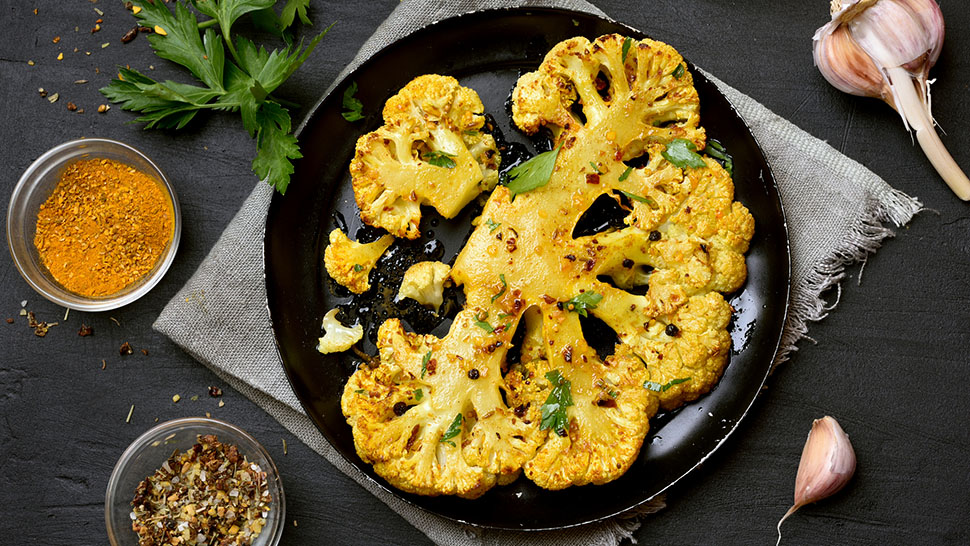
Vegetable centric dishes are the inspiration for many of-the-moment restaurant menus, even taking over the entire menu in some cases. Not only does this culinary trend land more vegetables on your plate (something most Americans can benefit from), but vegetables are often replacing less healthy foods like refined carbohydrates and red meat.
This veg-interest has spilled over into home kitchens with the invention of noodle spiralizers, pre-packaged cauliflower rice, and hundreds of recipes from food bloggers and magazines that make it easier than ever to bring the unique flavors, textures, and culinary properties of vegetables to your table. If you’re ready to get a little creative in the kitchen, here are five ways you can take your vegetables to the next level.
- “Riced” Vegetables: Cauliflower and broccoli are an excellent nutrient-dense, low-calorie rice substitution. Pulse in a food processor or grate on a box grater to create rice-sized bits. Saute with olive oil, herbs and vegetables for a rice pilaf, make a risotto, or steam in a pan and serve plain for a simple side or to go under a curry or stew.
- Oodles of Noodles: You can pretty much “noodle” any vegetable these days. From beets, carrots, and sweet potatoes to zucchini or cucumber, most vegetables can be turned into a lower calorie, lower carbohydrate noodle dish. Try a take on Pad Thai with daikon radish, carrot, and zucchini noodles, a Mediterranean-style zucchini noodle, or search for nearly any vegetable noodle you could ever want here.
- Vegetable “Steaks”: Moving the vegetable to the center of the plate has never been easier than with a cabbage, cauliflower, broccoli, or romanesco steak. Grill, sear, or roast, then drizzle with a mouthwatering sauce or create an irresistible rub or herb-filled crust and you’ll (almost) forget that meat is missing from the plate.
- Do the Mashed: Move over potatoes, there are other mashed vegetables in town. Root vegetables like parsnips, celery root, and rutabaga as well as many winter squash (butternut, acorn, kabocha, hubbard, etc) can be roasted and then mashed just like potatoes. Cauliflower, possibly the most versatile of the vegetables we’ve mentioned, has also become a popular choice to mash. If you’re not ready to make a complete switch, you can mix potatoes with other vegetables for a lightened up yet more nutrient-dense version.
- Not Your Typical Fry: While baking white or sweet potato “fries” is a great alternative to the fried version, swapping in other vegetables can bring new textures and flavors to your plate. Try jicama fries for their satisfying crunch, green bean fries that are crispy on the outside and soft in the middle, or baked parsnip fries for a less traditional flavor.
Beyond these unique preparations, simple changes like cutting vegetables into different shapes (such as a julienne or slicing extremely thin with a mandoline) or using different parts of the vegetable (such as carrot leaves or beet greens) can add a new texture to a dish. Roasting vegetables brings out their natural sweetness whereas sautéing can add flavor through whatever sauce you use. Showing vegetables just a little bit of love and attention can go a long way in terms of taste so don’t be afraid to get creative!